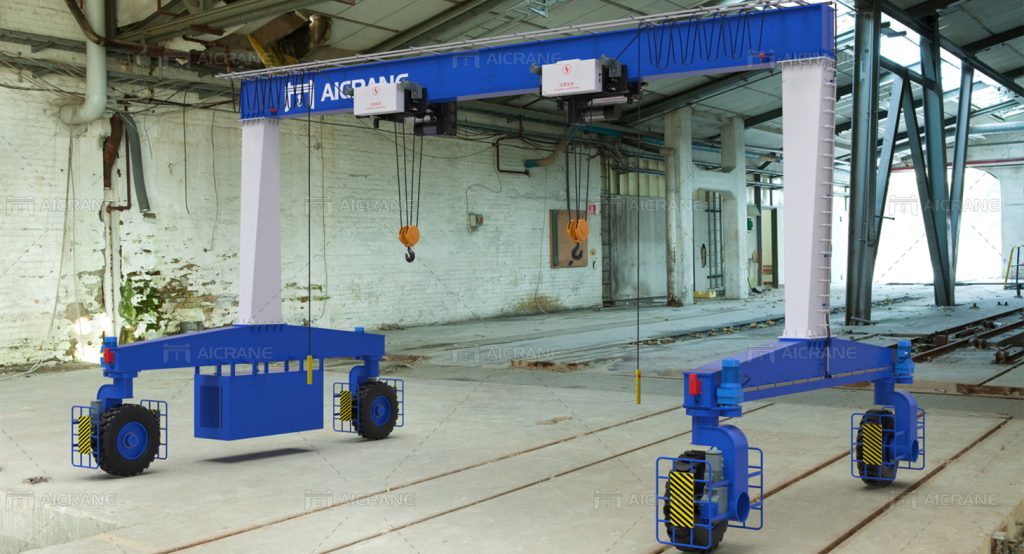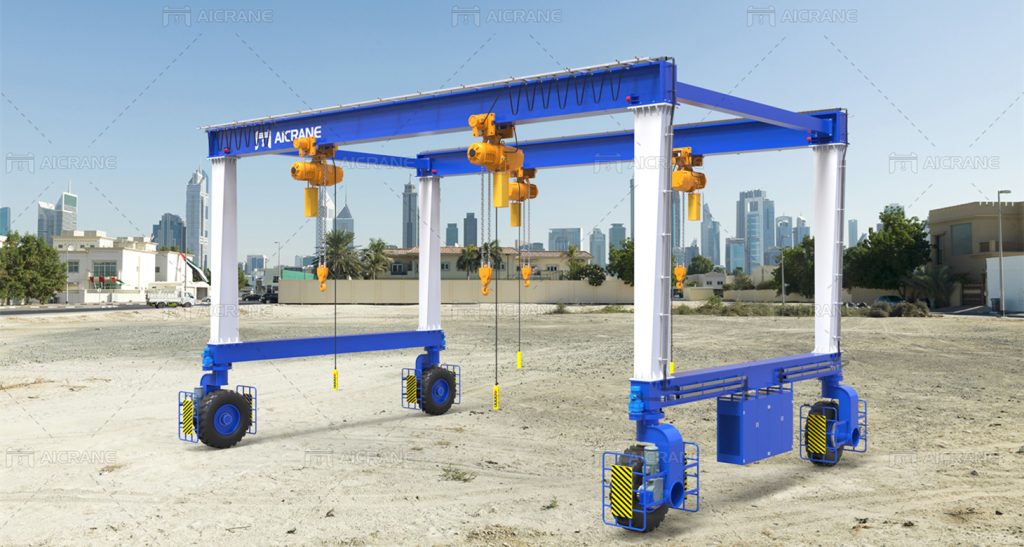In the intricate dance of global trade, the efficient movement of goods is paramount. Ports serve as crucial junctions in this process, where the smooth handling of cargo is vital to maintaining supply chain integrity. At the heart of many port operations lie Rubber Tyred Gantry Cranes (RTGCs), towering structures equipped with advanced lifting capabilities. This article explores how RTGCs drive productivity in port terminals, harnessing their unique advantages to streamline cargo handling processes and maximize operational efficiency.
Versatility and Flexibility
RTGCs offer unparalleled versatility and flexibility in cargo handling operations. Unlike traditional gantry cranes fixed to rails, RTGCs are equipped with rubber tires, allowing them to move freely within the terminal yard. This mobility enables RTGCs to reach containers positioned anywhere in the yard, accommodating various cargo configurations and optimizing space utilization. Whether handling standard containers or oversized cargo, RTGCs adapt seamlessly to meet the diverse needs of port terminals.
Advanced Lifting Capabilities
One of the key advantages of RTGCs lies in their impressive lifting capacity. These cranes are engineered to hoist containers weighing several tons with precision and efficiency. Their advanced lifting mechanisms, coupled with sophisticated control systems, enable rubber tyred gantry cranes(Козловой кран на пневмоходу) to handle multiple containers simultaneously, reducing turnaround times for vessels and enhancing overall productivity in port operations. With their robust design and superior lifting capabilities, RTGCs are indispensable assets for maximizing cargo throughput in port terminals.

Rapid Loading and Unloading
RTGCs excel in expediting the loading and unloading of cargo from vessels, a critical aspect of port operations. Their ability to swiftly transfer containers between ships and storage yards minimizes berthing times and accelerates cargo turnaround, enabling ports to handle larger volumes of shipments in shorter timeframes. This rapid loading and unloading process not only enhances productivity but also reduces congestion at terminals, ensuring efficient flow throughout the supply chain.
Adaptability to Varied Terrain
Another advantage of RTGCs is their adaptability to diverse terrain conditions. Whether the terminal yard is flat, sloped, or uneven, RTGCs navigate with ease, thanks to their rubber tires and robust suspension systems. This adaptability ensures consistent performance and operational efficiency, regardless of the topographical challenges present in the terminal environment. RTGCs seamlessly traverse the terminal yard, maximizing productivity and minimizing disruptions to cargo handling operations.
Integration with Digital Technologies
In an era of digital transformation, RTGCs are increasingly integrated with advanced technologies to further enhance productivity and efficiency. Automated systems, artificial intelligence algorithms, and data analytics optimize crane performance(козловой кран 50 тонн), predict maintenance needs, and streamline container handling processes. Real-time monitoring and remote operation capabilities enable operators to oversee crane operations from centralized control rooms, maximizing productivity and ensuring operational excellence.
Enhancing Efficiency with Advanced Technology Integration
Rubber Tyred Gantry Cranes (RTGCs) are not just robust lifting machines but also technological marvels. Integrating advanced technologies such as automation, artificial intelligence, and data analytics enhances their productivity. Automated stacking systems optimize container storage, while predictive maintenance algorithms anticipate maintenance needs, minimizing downtime. Real-time data analytics provide insights into operational efficiency, enabling proactive decision-making and continuous improvement.
Optimizing Space Utilization
One of the key advantages of RTGCs is their ability to optimize space utilization in port terminals. With their rubber tires enabling mobility, RTGCs can efficiently navigate through terminal yards and stack containers in a compact manner. This maximizes the use of available space, allowing ports to handle larger cargo volumes without the need for extensive expansion. By strategically positioning containers and minimizing aisle space, RTGCs ensure efficient use of terminal real estate, driving productivity and reducing operational costs.

Facilitating Intermodal Transportation
RTGCs play a crucial role in facilitating intermodal transportation, seamlessly transferring containers between ships, trucks, and trains. Their versatility allows them to handle various container sizes and configurations, ensuring compatibility with different modes of transport. By expediting container transfers and minimizing dwell times, RTGCs enhance the efficiency of intermodal transportation networks, supporting the seamless flow of goods across different modes of transport and enhancing overall supply chain efficiency. Visit website:https://gantrycrane.kz/
Adapting to Evolving Industry Trends
The maritime industry is constantly evolving, with emerging trends such as larger vessels and increased containerization shaping port operations. RTGCs are designed to adapt to these changing industry dynamics, with manufacturers continually enhancing their capabilities to meet evolving customer needs. From increasing lifting capacities to improving energy efficiency and incorporating eco-friendly features, RTGCs evolve in tandem with industry trends, ensuring that port terminals remain at the forefront of innovation and productivity.
In conclusion, Rubber Tyred Gantry Cranes (RTGCs) are indispensable assets for driving productivity in port terminals. With their versatility, advanced lifting capabilities, rapid loading and unloading capabilities, adaptability to varied terrain, and integration with digital technologies, RTGCs streamline cargo handling processes and maximize operational efficiency. As ports continue to evolve to meet the demands of global trade, RTGCs will remain at the forefront, driving productivity and excellence in maritime logistics.